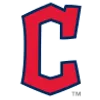
 Guardians
Guardians White Sox
White Sox Guardians
Guardians White Sox
White Sox
 Guardians
Guardians White Sox
White Sox
 Guardians
Guardians White Sox
White Sox
 Guardians
Guardians White Sox
White Sox
 Guardians
Guardians White Sox
White Sox
 Guardians
Guardians White Sox
White Sox
 Guardians
Guardians White Sox
White SoxFull Schedule
7/12
8:00 pm
CHSN
7/13
6:00 pm
CHSN
7/18
10:30 pm
CHSN
7/19
10:30 pm
CHSN
7/20
5:30 pm
CHSN
7/21
11:30 pm
CHSN
7/22
11:30 pm
CHSN
7/23
11:30 pm
CHSN
7/25
11:30 pm
CHSN
7/26
11:00 pm
CHSN
7/27
6:00 pm
CHSN
7/28
11:30 pm
CHSN
7/29
11:30 pm
CHSN
7/30
6:00 pm
CHSN
8/2
1:30 am
CHSN
8/3
2:00 am
CHSN
8/3
8:00 pm
CHSN
8/6
1:30 am
CHSN
8/7
1:30 am
CHSN
8/7
8:00 pm
CHSN
8/8
11:30 pm
CHSN
8/9
11:00 pm
CHSN
8/10
6:00 pm
CHSN
8/11
11:30 pm
CHSN
8/12
11:30 pm
CHSN
8/13
6:00 pm
CHSN
8/16
12:00 am
CHSN
8/16
11:00 pm
CHSN
8/17
6:00 pm
CHSN
8/18
11:00 pm
CHSN
8/19
11:00 pm
CHSN
8/20
11:00 pm
CHSN
8/22
11:30 pm
CHSN
8/23
11:00 pm
CHSN
8/24
6:00 pm
CHSN
8/25
11:30 pm
CHSN
8/26
11:30 pm
CHSN
8/27
11:30 pm
CHSN
8/28
11:30 pm
CHSN
8/29
11:30 pm
CHSN
8/30
11:00 pm
CHSN
8/31
6:00 pm
CHSN
9/1
6:00 pm
CHSN
9/2
11:30 pm
CHSN
9/3
CHSN
9/4
11:30 pm
CHSN
9/5
10:30 pm
CHSN
9/6
10:00 pm
CHSN
9/7
5:30 pm
CHSN



